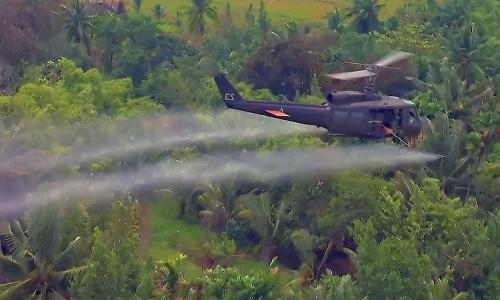COMMENT | Who were the victims of Agent Orange in Malaya?
COMMENT | Reading a recent wire service report in AP about seeking justice for Vietnamese victims of Agent Orange, I was reminded of a letter I had written to The Star, nearly 40 years ago. The AP's article refers to the case in the French court taken up by a French-Vietnamese woman Tran To Nga who is suing 14 companies that produced and sold the powerful defoliant dioxin used by US troops during the Vietnam War. Here were echoes of a letter on this subject I had written to The Star dated March 30, 1984:
“It is a national tragedy that we had to wait until the lifting of the 30-year secrecy rule in Britain before we realised the scandal that our country (Malaya) was the first country on earth to fall victim to Agent Orange.”
In 1984, the British journal New Scientist revealed that the British army had used a herbicide identical to Agent Orange during the emergency in Malaya (1948-60). But it was not an “exclusive” – four years before that, when the Soviet Union was being accused of using chemical warfare against the Afghan people, the French Le Monde Diplomatique had revealed that the British army had also done the same in Malaya during the emergency.
In my article, I pointed out that it was criminal that British officials, ICI (the chemical company involved) and Malayan officials had kept all this health hazard from the public. Until 1984, only those records relating to events up to 1952 had been revealed and they showed that at least 20 sites in west Pahang had been sprayed with this toxic herbicide.
From this current French case, we can see the horrific effects of Agent Orange not only on its victims but also on their children and grandchildren, namely, heart defects, other organ malformations and cancer. Tran is seeking damages for multiple health problems, including cancer, and those experienced by her children. So far, only military veterans from the US and other countries involved in the war have won compensation. The justice system in France allows citizens to sue over events that took place abroad.
Agent Orange contains dioxin that can stay in the soil and in lakes and rivers for generations. It can enter the food supply through the fat of fish and other animals. Vietnam says as many as three million have suffered illnesses from exposure to Agent Orange during the Vietnam War.
Now that the emergency secrets have been declassified, it is the duty of the Malaysian government to press with the greatest urgency all the details of the Agent Orange spraying operation from 1948 to 1960.
The Star (Jan 29, 1984) quoted Malaysian government officials as saying that it was not their responsibility to conduct any studies since the spraying happened before independence. At the time, science, technology and environment minister Stephen Yong even claimed that “the effects of the spraying should have worn off by now, if there were any in the first place” (The Star, Jan 21, 1984). The Pesticides Board and Defence Ministry’s responses were as good as a shrug of the shoulders.
Long-term effects
At a medical conference in France in 1970, attention was also drawn to the possible cancer-producing effects of dioxin, the deadly component of Agent Orange. Since the spraying began in the 1960s during the Vietnam War, the frequency of cancer of the liver had increased in multiples in some areas. Questions were also raised of aberrations in the chromosomes which may affect reproductive ability.
And during the 1908s, a Vietnamese doctor, Nguen Thi Ngoc Phuong, did scrupulous studies of the long-term effects of the spraying of Agent Orange over Vietnam’s forest and farmland. She compared data of people who lived in the heavily sprayed areas and those who did not. Her tentative conclusions that “the victims of Agent Orange are generations yet unborn” are now sadly being borne out through Tran To Nga’s case.
In Malaysia, we will never know the full effects of the spraying of Agent Orange in our forests and farmlands between 1948 and 1960 so long as our medical records are inadequate and there is no political will to find out where and to what extent Agent Orange was used in our country during the emergency.
Still, those Malaysians whose kin and kindred have died or suffered from these illnesses and organ malformations should know that another factor such as the effect of this toxic herbicide could have been responsible.
It is the solemn duty of the Malaysian government to first, investigate the full extent of the Agent Orange spraying during the emergency; second, study the data to see if there has been a disproportionate incidence of cancer, limb and organ deformities in the areas sprayed through the years, and finally, ensure that justice and compensation are given to the victims of Agent Orange in Malaysia.
KUA KIA SOONG is adviser of Suara Rakyat Malaysia (Suaram).
The views expressed here are those of the author/contributor and do not necessarily represent the views of Malaysiakini.
RM12.50 / month
- Unlimited access to award-winning journalism
- Comment and share your opinions on all our articles
- Gift interesting stories to your friends
- Tax deductable

